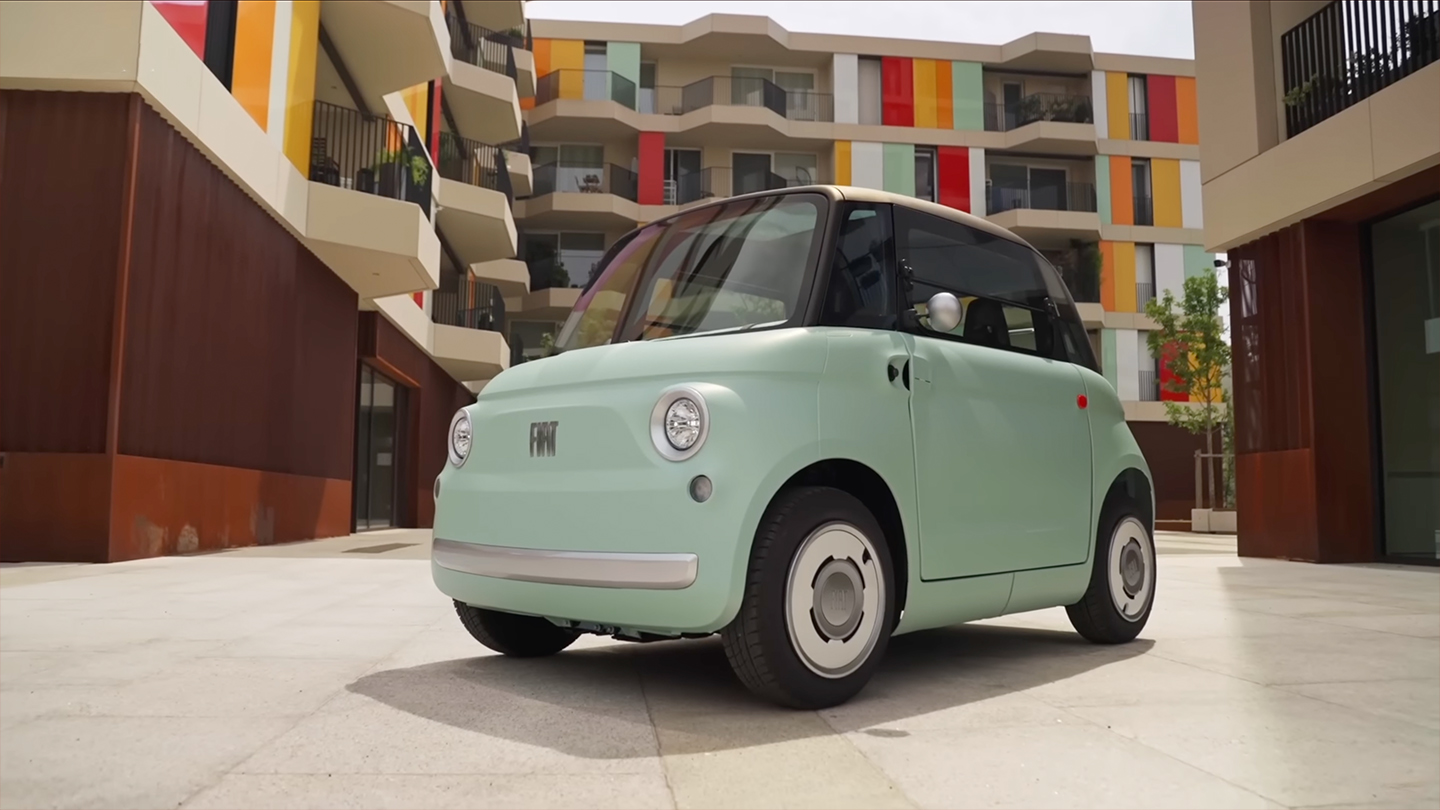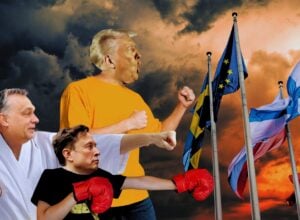Włochy przez dziesięciolecia kojarzono jako motoryzacyjną potęgę. Fiaty produkowano i sprzedawano w masowych ilościach we wszystkich zakątkach świata, w tym w Polsce, podczas gdy Lancia i Alfa Romeo osiągały sukcesy w sportach motorowych. Teraz siła włoskiego przemysłu motoryzacyjnego nie jest jednak tak oczywista, zwłaszcza jeśli pominąć rynek supersamochodów, gdzie np. Ferrari wciąż ma bardzo silną pozycję.
Produkcja w ostatnich dekadach spadała, kilku producentów przestało funkcjonować. Prawie wszystkie wciąż działające marki należą do międzynarodowego koncernu Stellantis, w którym więcej do powiedzenia wydają się mieć Francuzi. Co więcej, na władze korporacyjne spada krytyka włoskiego rządu, zarzucającego producentowi zaniedbywanie włoskich fabryk i bardzo wybiórcze podejście do rodowodu poszczególnych marek.
Polskie Milano i marokańskie Topolino? Nie, dziękuję
W kwietniu tego roku Alfa Romeo zaprezentowała nowy model o nazwie Milano, nawiązującej do korzeni marki założonej ponad sto lat temu właśnie w Mediolanie. To jednak nie spotkało się z ciepłym przyjęciem włoskich władz. W czym tkwił problem? Milano będzie produkowane w polskich Tychach, więc nazwę uznano za błędnie sugerującą włoskie pochodzenie, co jest zakazane przez miejscowe prawo. Stellantis musiał ustąpić i nowy model wchodzi na rynek jako Junior, korzystając z innej historycznej nazwy.
To niejedyny taki epizod w sporze na linii rząd Meloni–Stellantis. Kilka miesięcy temu Guardia di Finanza (policja finansowa) zatrzymała w porcie w Livorno kilkaset elektrycznych fiatów Topolino. Tym razem wynikało to z obecności włoskich flag na samochodach wyprodukowanych w Maroku, co ponownie miało być nadużyciem i oszukiwaniem klientów. Producent zapowiedział usunięcie trójkolorowych oznaczeń z zatrzymanych samochodów i następnych serii, ale to raczej nie zakończy wojny podjazdowej między rządem a koncernem.
Zamieszanie wokół zbyt włoskich nazw i symboli stanowi bowiem tylko wierzchołek góry lodowej. Głównym zarzewiem konfliktu jest fakt malejącej produkcji samochodów we Włoszech, za co obecnie odpowiada przede wszystkim Stellantis, następca Fiata, ograniczający koszty i zwalniający tysiące włoskich pracowników. Trudno to jednak uznać za nową tendencję – w ostatnim ćwierćwieczu produkcja samochodów osobowych spadła we Włoszech o blisko milion, do ośmiuset tysięcy pojazdów. Rząd Meloni chce odwrócić sytuację i za cel stawia sobie osiągnięcie poziomu 1,3 miliona samochodów made in Italy.
Włoscy nacjonaliści liczą na chińską motoryzację
Niespodziewanym kołem ratunkowym dla włoskiego przemysłu motoryzacyjnego mogą być chińskie inwestycje. Nieoficjalnie mówi się o rozmowach z kilkoma producentami, takimi jak Dongfeng i Chery, z których wszystkie są spółkami państwowymi. O ile dla Włoch współpraca oznaczałaby uratowanie miejsc pracy, o tyle chińscy producenci zyskaliby nie tylko dostęp do wykwalifikowanej siły roboczej i rozwiniętej infrastruktury, ale przede wszystkim zdobyliby przyczółek do ekspansji na europejskie rynki.
Wciąż niepewne jest, na ile flirt z Chińczykami służy jako straszak na Stellantisa, który bardzo nie chciałby dodatkowych rywali, a na ile stanowi realną próbę ściągnięcia do Włoch nowego producenta. Jeśli Meloni rzeczywiście chce tego drugiego, to niewykluczone jest nawet użycie jednej z już niefunkcjonujących włoskich marek, takich jak Autobianchi lub Innocenti, jako szyldu, pod którym produkowane będą chińskie samochody. Rząd Włoch ma bowiem prawo do przejęcia i przekazania innemu inwestorowi marki nieużywanej przez co najmniej pięć lat. Dla nieznanego obcego producenta sięgnięcie po starą nazwę byłoby na wagę złota.
Obecnie obie wspomniane marki należą do Stellantisa, więc oddanie ich w ręce konkurencji stanowiłoby dodatkowy afront dla tak krytykowanej przez Meloni korporacji. Włoska premierka nie jest zresztą jedyną przeciwniczką władz koncernu – prezesa Carlosa Tavaresa wielokrotnie krytykowano za to, że przyznaje sobie pensję na poziomie 36 milionów euro, jednocześnie tnąc etaty w spółce i wzywając do zaciskania pasa. Nie ma jednak innych szefów rządów lub głów państwowych, z którymi Tavares miałby aż tak napięte relacje. W przypadku Włoch w grę wchodzi frustracja z powodu błędów popełnionych w poprzednich dekadach.
Prywatyzacja pożera własne dzieci?
Ponieważ Meloni zarzuca Stellantisowi faworyzowanie francuskich interesów, to wypada zapytać, dlaczego międzynarodowy koncern miałby w większym stopniu słuchać się jednego z państw. Prostą odpowiedzią będzie przypomnienie, że rząd Francji należy do głównych udziałowców Stellantisa – za sprawą wcześniejszej współwłasności Peugeota i Citroëna ma on obecnie ok. 6 proc. akcji spółki zarejestrowanej w Holandii i chociaż nie wydaje się to dużą wartością, to sprawia, że państwo jest reprezentowane w organach decyzyjnych Stellantisa. Gdy na szali ważony jest los kolejnych zakładów, takie narzędzie nacisku okazuje się czasem bezcenne.
W tym kontekście nasuwa się kolejne pytanie – tym razem o powody nieobecności rządu Włoch wśród udziałowców największego (częściowo) włoskiego producenta samochodów, skoro niesie to takie korzyści.
Kiedyś do państwa należała m.in. Alfa Romeo, jednak została ona przekazana Fiatowi w latach 80., gdy na neoliberalnej fali wyprzedawano majątek publiczny. Wcześniej własność nad koncernem motoryzacyjnym służyła rządowi np. do wspierania rozwoju zacofanego południa kraju, gdy decydowano o otwieraniu nowych fabryk w okolicach Neapolu. Rząd Włoch własnowolnie pozbawił się takich narzędzi prowadzenia polityki gospodarczej i nie zachował nawet mniejszościowych udziałów, tak jak zrobiono to we Francji w celu zachowania wpływu na główne koncerny motoryzacyjne.
Kolejnym zabezpieczeniem interesów lokalnego przemysłu, z którego Włosi sami zrezygnowali, były silne prawa pracownicze chroniące przed masowymi zwolnieniami i szybkim zamykaniem zakładów. Gdy blisko dekadę temu rząd Renziego liberalizował kodeks pracy, miało to skutkować przyciągnięciem inwestorów i ożywieniem gospodarki. W przypadku motoryzacji efekt był odwrotny. Otrzymawszy od władz taki prezent, producenci wykorzystali go do szybszego przenoszenia fabryk za granicę, a prawicowa koalicja rządząca na tym polu żadnych zmian nie planuje.
Ironią losu jest fakt, że wobec tego potencjalnym ratunkiem dla włoskiego przemysłu motoryzacyjnego jest firma państwowa, ale azjatycka. Chińscy producenci rozwijają się w dużej mierze dzięki wsparciu publicznemu i nie jest to obecnie wyjątek. W Turcji kolejne modele elektryczne prezentuje państwowy Togg, planując eksport miliona samochodów do końca dekady. W tym świetle polska Izera zdaje się wpisywać w światowe trendy, chociaż ślimacze tempo realizacji stawia cały projekt pod znakiem zapytania. Pytaniem otwartym pozostaje, czy obecnej władzy wystarczy determinacji do sfinalizowania planów swoich poprzedników.

 Wspieraj
Wspieraj 

 Wspieraj
Wspieraj  Wydawnictwo
Wydawnictwo 
 Zaloguj się
Zaloguj się 
















